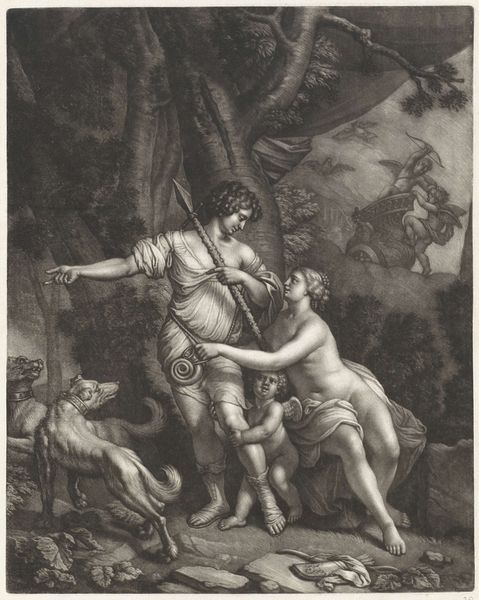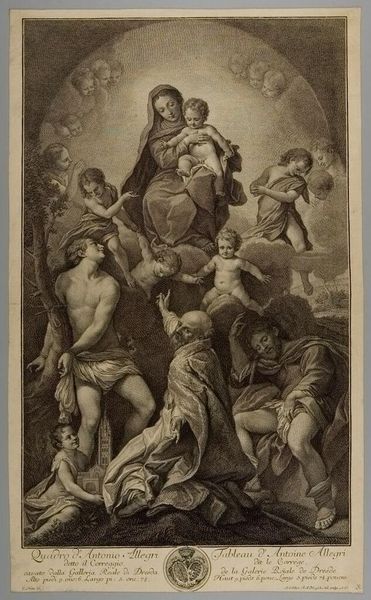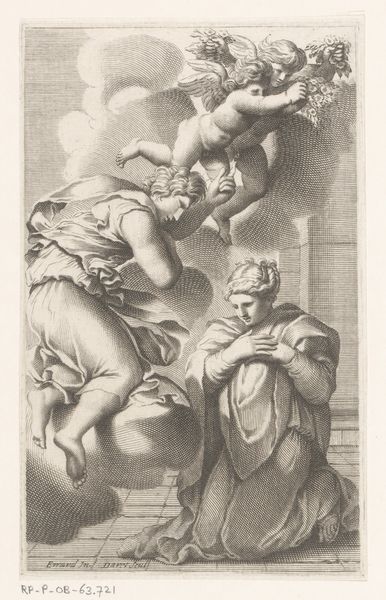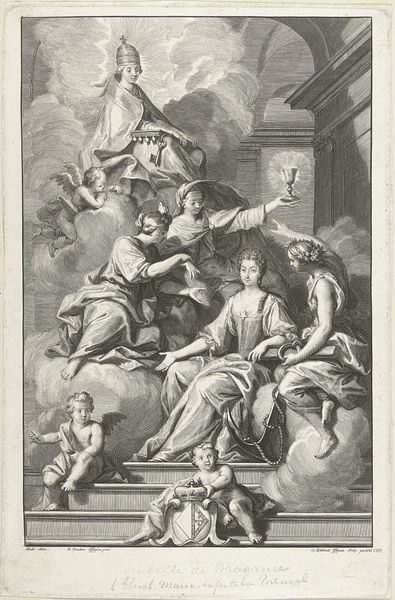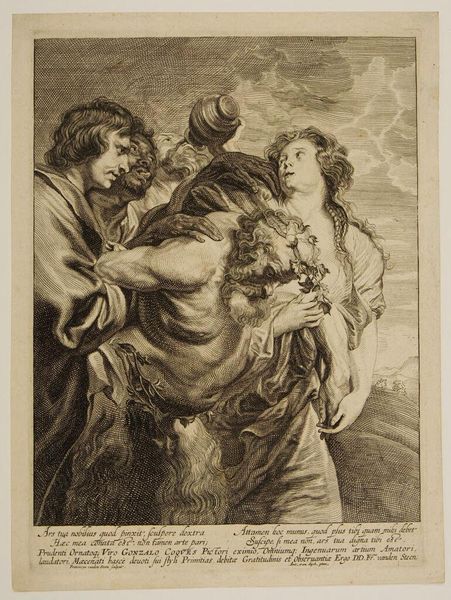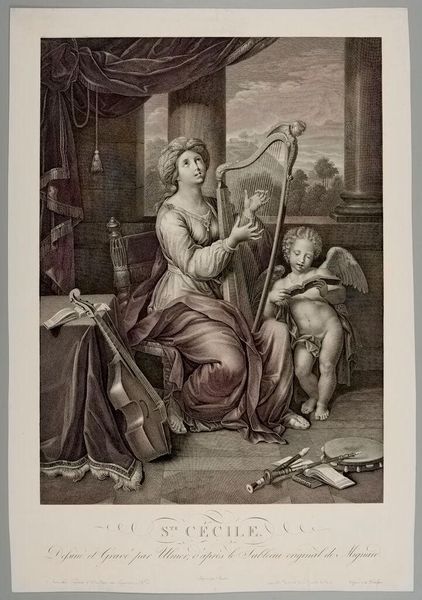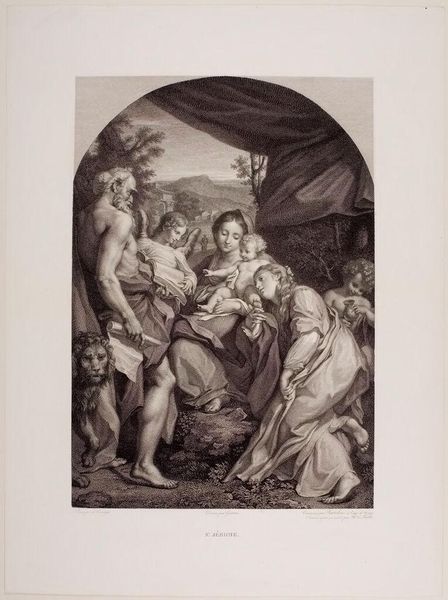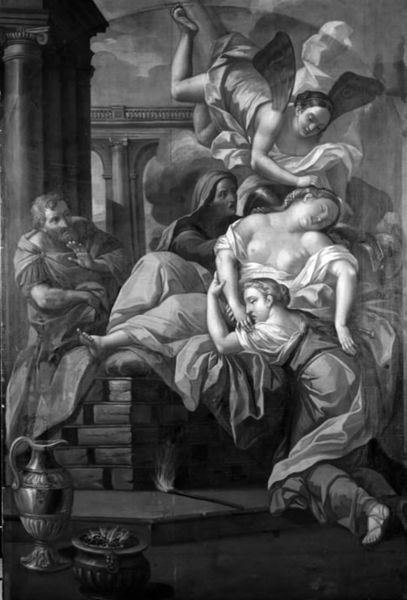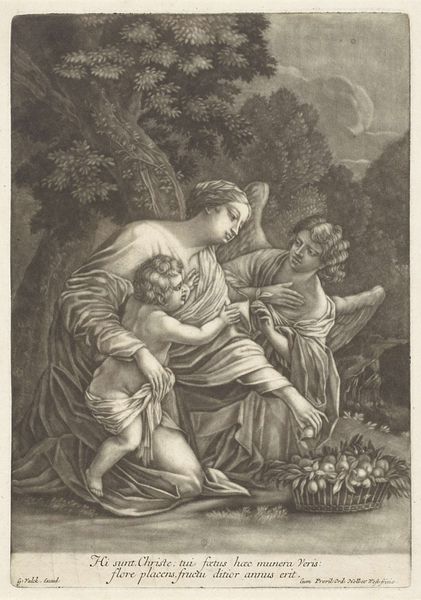
print, etching
#
allegory
#
baroque
# print
#
etching
#
roman-mythology
#
mythology
#
history-painting
Copyright: Public domain
Giovanni Battista Piranesi made this etching, titled "Jupiter and Antiope Palma," in 18th century Italy, a time of renewed interest in classical antiquity. The print shows a female figure symbolizing "Providentia," or foresight, surrounded by putti and classical architectural elements. The image creates meaning through these visual codes, recalling the grandeur of ancient Rome. The inclusion of putti, winged cherubic figures, emphasizes themes of fertility and renewal. Piranesi's broader body of work often depicted the city of Rome. His prints circulated widely, shaping perceptions of Roman history and contributing to the growth of Neoclassicism. They also reveal the cultural power of the art market and the role of institutions in shaping artistic production. To understand this image better, look to other visual representations of Roman classicism, including the work of the Academy. Understanding such works requires attention to the social conditions that shape artistic production.
Comments
No comments
Be the first to comment and join the conversation on the ultimate creative platform.

